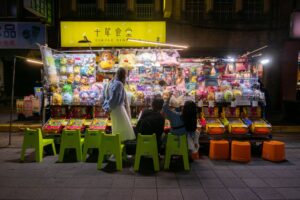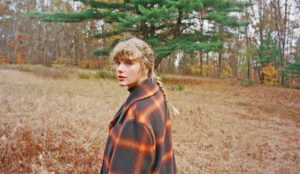At Leeds-Bradford airport, as the closure of my departure gate fast approached, I stood at a security conveyor waiting for the results of a swab of my daughter’s rucksack. My eyes pleaded with the put-upon official to speed things up. I did not, during those panicked moments earlier this summer, think of myself as an ethnographic subject. But then I reread Marc Augé’s Non-Places: Introduction to an Anthropology of Supermodernity, and I was struck by how useful a study I might have been.
Augé’s best-selling book kicks off by imagining the experience of Pierre Dupont as he drives to Roissy airport, parks, goes through security, boards his flight and reads a magazine. His experience is far smoother than mine was: “He was enjoying the feeling of freedom imparted … by the certainty that, now he was ‘sorted out’, his identity registered, his boarding pass in his pocket, he had nothing to do but wait for the sequence of events.” Dupont flicks through ads for hotels and reads a book review that contemplates “the homogenization of needs and consumption patterns”. This is supermodernity: a globalised, homogenised, economy in which the same experiences and products are replicated in far-flung geographic locations.
It’s an unusual technique for scholarly writing. But Augé’s willingness to engage in make-believe in this way allows him to draw the general reader into what could have been an alarmingly theoretical essay on the state of anthropology.
Because French, and philosophically inclined, Augé, who died last month, is often lazily bracketed with the Derrida and Foucault and the like. But he was first and foremost a practitioner. He began his career with field studies of the Alladian cultures of the Ivory Coast, writing books about power, death, symbols — key touchstones of anthropology. And though French scholarship after the student protests of 1968 was marked by radicalism, Augé comes across as a genial thinker: political without being ideological, keen to build bridges in the Francophone academy at a time of upheaval.
Augé was keen to explain how the transformations of the contemporary world had made anthropology more complicated. “We are in an era characterized by changes of scale,” he wrote. “Images of all sorts, relayed by satellites and caught by the aerials that bristle on the roofs of our remotest hamlets, can give us an instant, sometimes simultaneous vision of an event taking place on the other side of the planet.” So far, so postmodern; what Augé called the “acceleration” of events is an idea that crops up repeatedly in political theory. The specifically supermodern condition that he identifies is the dominance of non-places.
We live in “a world where people are born in the clinic and die in hospital, where transit points and temporary abodes are proliferating under luxurious or inhuman conditions” — from “hotel chains and squats, holiday clubs and refugee camps”. In non-places, exchange between human beings is transactional: you buy a sandwich, or a massage, or a train ticket. Speech is replaced by text; signs direct behaviour, instead of people, giving instructions and advertising products. We are, therefore, isolated, in “a solitude made all the more baffling by the fact that it echoes millions of others”.
Anthropology has traditionally been interested in circumscribed places, the best example being the island, which allows one to consider a culture in its entirety; but non-places offer the opportunity to study a kind of psychic isolation. This “world thus surrendered to solitary individuality … offers the anthropologist (and others) a new object”.
The implications of the rise of these non-places are many and varied. For instance, access to the sort of anonymity they allow is granted only if we provide evidence of our individuality, in the form of identification documents; Augé foresaw that supermodernity would increasingly require us to prove who we are. He also goes so far as to speculate that non-places are terrorist targets not only for practical reasons, but also because they refuse the very idea of the historical territories that nationalist causes wish to restore.
Augé suggests, though, that we shouldn’t simply surrender to their ambiguous charms and to the seductive “feeling of freedom” they offer. Instead of giving in to the temptation to be passive, he suggests we can preserve our humanity through activity — observing, recording, storytelling. In this pursuit, he has influential fellow travellers. Take, for example, the writer Iain Sinclair, whose practice is psychogeography, which both examines and tries to subvert the behaviours produced by urban space; he was interested in precisely the kinds of non-places Augé identified — car parks and industrial estates. London Orbital, a book tracking a motorway, routed him through the Heathrow suburbs. Where Augé is an anthropologist with a poet’s touch, Sinclair is the opposite; he has the eye of an anthropologist but his project is that of an avant-garde poet, imagining afresh these overlooked zones.
The attention Augé paid to the airport also aligns him with J.G. Ballard, who Sinclair visited in Shepperton on his orbital walk. Ballard’s 1997 essay on airports for Blueprint magazine comes across as a piece of rogue anthropology. “We are no longer citizens with civic obligations,” he writes, “but passengers for whom all destinations are theoretically open.” The airport is perhaps the ultimate non-place, a “discontinuous city, whose vast populations … are entirely transient, purposeful and, for the most part, happy.” Happy because, as Augé pointed out, anonymity can be a liberation; airports, because so familiar, provide a sense of being at home when far away.
Yet what at one moment can be experienced as liberation and comfort can, in another, become boredom and oppression. The non-place is double-edged. But supermodern life inevitably channels us into these non-places: we have no choice but to enter. We therefore need to learn how to endure them.
Augé, in search of guidance on how to do so, inclines towards the Jesuit priest Michel de Certeau, who in fact first used the term non-place. In his enduringly wonderful The Practice of Everyday Life, Certeau draws a distinction between the “strategies” used by institutions to control our behaviour public places — city-planning, for example — and the “tactics” employed by ordinary people to resist that control — such as climbing a high building to enjoy the view. Certeau’s book has become a kind of manual, which guides us towards imagining our own tactics, whether it be walking against the arrows on the floor of Ikea or pulling up our trousers to paddle in a fountain.
Non-places is an analysis rather than a manual, but it is clearly much inspired by de Certeau’s emphasis on the “itinerary”, the individual journey. To chart a path through non-places, we must become supermodern flaneurs. But above all, Augé argues for restoring a social element to places that impose upon us solitariness. Talking to strangers may be the best way to push against the dehumanising effects of supermodernity. Pleading with airport officials using words rather than glares may be the way to reassert agency in a non-place that would rob us of it.
Disclaimer
Some of the posts we share are controversial and we do not necessarily agree with them in the whole extend. Sometimes we agree with the content or part of it but we do not agree with the narration or language. Nevertheless we find them somehow interesting, valuable and/or informative or we share them, because we strongly believe in freedom of speech, free press and journalism. We strongly encourage you to have a critical approach to all the content, do your own research and analysis to build your own opinion.
We would be glad to have your feedback.
Source: UnHerd Read the original article here: https://unherd.com/




